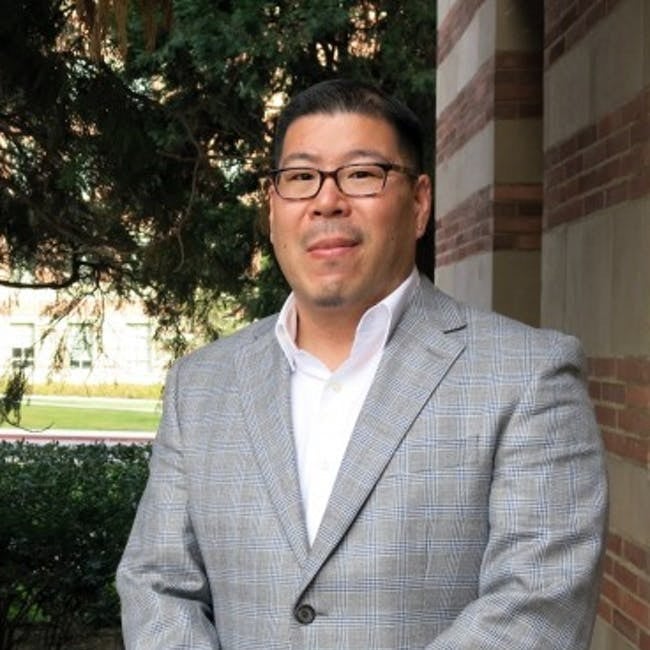Congressional testimony underscores the role and importance of Asian American, Native American, Pacific Islander institutions and other minority serving institutions
Between 2010 and 2020, the Asian American and Pacific Islander population was the fastest growing racial group in the United States, shifting the demographic landscape and bringing challenge and opportunity to the nation’s systems of higher education.
Amid these changes, UCLA Professor Robert T. Teranishi testified on March 2, 2022 to the U.S. House of Representatives Subcommittee on Higher Education and Workforce Investment Committee on Education and Labor about the Relevance and Contributions of Asian American and Native American Pacific Islander Serving Institutions (AANAPISIs) in the U.S. Higher Education Landscape.
The AANAPISI program was established by Congress in 2007 and 2008. The program provides discretionary grants to eligible institutions of higher education across the United States and Pacific Territories to “improve and expand their capacity to serve Asian Americans and Native American Pacific Islanders and low-income individuals.” As of 2020, 165 colleges and universities were eligible to participate in the program.
“This is a very important time to focus on Asian American and Native American Pacific Islander Serving Institutions and other minority serving institutions in higher education,” Teranishi says. “There is a rapidly shifting demographic landscape in our nation and we need greater attention to a growing number of low-income minority students and the institutions that serve them.”
Teranishi’s testimony underscored the vast diversity of an AAPI population unlike any other major racial group in the United States. Consisting of 48 different ethnic groups, ranging across the socioeconomic spectrum, AAPI’s speak 300 different languages and vary widely in their histories, cultures and religions.
Despite perceptions of universally high educational achievement, they also vary widely in terms of educational attainment. For example, about half of Southeast Asian and Pacific Islander students leave college without attaining a degree.
Teranishi’s testimony points to a particularly troubling demographic trend, a decline in Native Hawaiian and Pacific Islander college enrollment and lower levels of bachelor degree attainment among younger Guamanians, Native Hawaiians and Pacific Islanders, increasing the gap between these students and average levels nationally.
“These trends make clear significant challenges which are too often overlooked and leave AAPI students underserved,” Teranishi said in his testimony. “It is the most marginalized and vulnerable AAPI students, and the institutions that serve them, that benefit the most from the Asian American Native Pacific Islander Serving Institution program.”
In his testimony before the subcommittee, Teranishi underscored the importance of the AANAPISI program for increasing college completion and student success. In 2018, the 165 eligible AANAPISI enrolled 40 percent of AAPI undergraduates, and three-quarters of low-income AAPI students, providing an effective way to provide resources to institutions serving the highest concentrations of low income AAPI students. These institutions confer a disproportionately high concentration of degrees to AAPI students, including nearly half (47.5%) of all associate’s degrees, and almost one-third (29.4%) of all bachelor’s degrees to AAPI students in the nation. AANAPISI’s also find and further ways to collaborate, share best practices, and engage the broader field of higher education to pursue greater student success for low-income AAPI students.
AANAPISI’s are also serving as incubators for innovation in higher education, utilizing their resources to respond to the needs of their students and engage in initiatives that aim to increase access to and success in college. These grant-funded activities are improving how these institutions deliver student services, make improvements to curricular and academic program development, increase their capacity to improve leadership and mentorship opportunities, and contributing to faculty and staff development.
For example, De Anza Community College in Cupertino, California, which has a large concentration of AAPI students, used their grant to develop learning communities that paired developmental English with an AAPI literature course. The program also included wrap-around support services with an embedded counselor. An analysis by Teranishi and colleagues found that these students, compared to the control group, passed their developmental course at a higher rate, were more likely to transition from developmental to college-level English, were more likely to earn associate’s degrees, and accomplish them in less time.
Teranishi also noted the innovation in the collection and reporting of disaggregated data taking place at the University Nevada Las Vegas.
“This is a noteworthy effort. Disaggregated data is critical for revealing differences between AAPI sub-groups with regard to their access and utilization of services on campus, as well as disparities in college participation and degree attainment, which is concealed by aggregated data on AAPI students,” Teranishi said in his testimony.
Teranishi urged members of the subcommittee to confront barriers and challenges to Asian American Native Pacific American Pacific Islander-serving institutions and to pursue the opportunities they offer. His testimony calls for greater investment in AANAPISIs. The current level of funding provides grants to only 30 institutions in 2020 and 2021, and a higher level of funding would greatly increase the number of students that benefit from the resources.
Teranishi also unscored the need for disaggregated student data.
“Throughout higher education, there is a need for greater attention to and action on the limitations of the current data systems and practices in higher education. AANAPISIs can play an important role in modeling innovative ways of leveraging data and research to inform higher education services, practices, and policies,” Teranishi said in his testimony.
“This is a particularly important civil rights issue for the AAPI community because aggregated data is literally rendering the most marginalized and vulnerable groups invisible.”
————————————————————————————————————————————-
More information about the House subcommittee hearing is available at https://edlabor.house.gov/hearings/investing-in-economic-mobility-the-important-role-of-hispanic-serving-institutions-and-other-minority-serving-institutions
Full text of Professor Teranishi’s testimony is available here.
Video of Professor Teranishi’s testimony will be available at:
